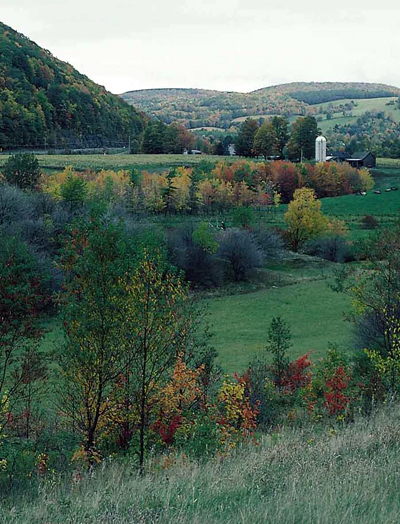 |
| (USDA NRCS) |
This image shows a dairy farm in upstate New York nestled in a small valley. Moving from foreground to background, look for the following zones:
-
grassy slope with trees and shrubs
-
pasture with another area of trees and shrubs
-
a swath of deciduous trees in fall color (leading to the farm and silo)
-
a field of corn in tassel
-
a road (indicated by telephone poles)
-
and finally the hill, densely wooded
Think about the boundaries between each of these zones and what might be moving from one to the other: leaves, insects, water, animals, or nitrogen and other chemicals. What else? Consider also the entire farm ecosystem as a whole: What is moving across that whole-farm boundary in terms of inputs and outputs?